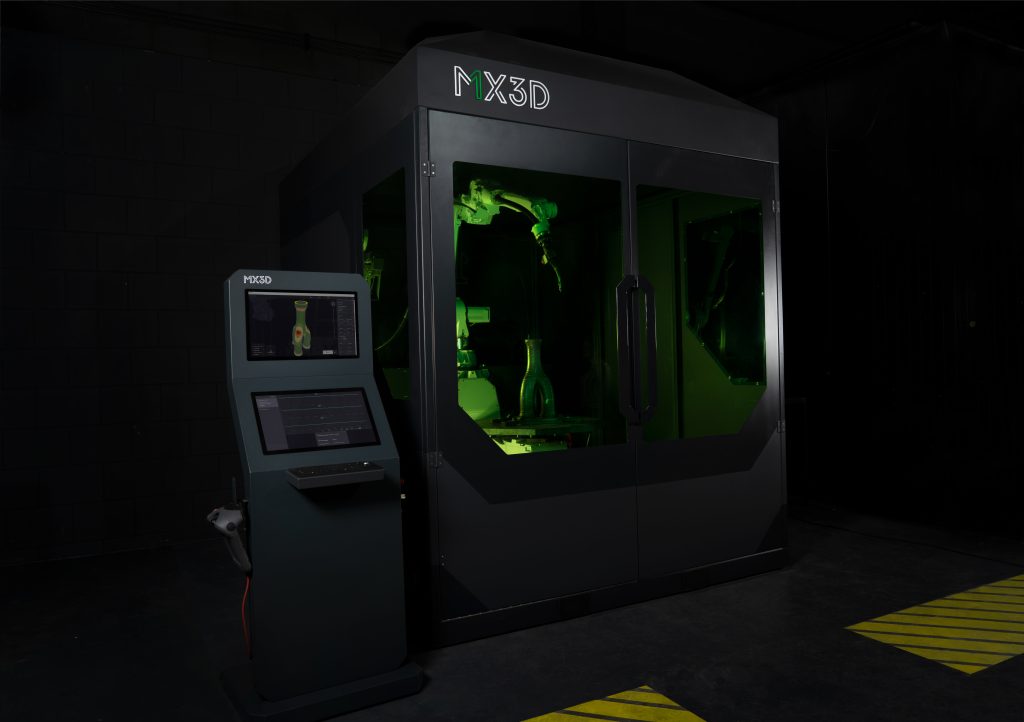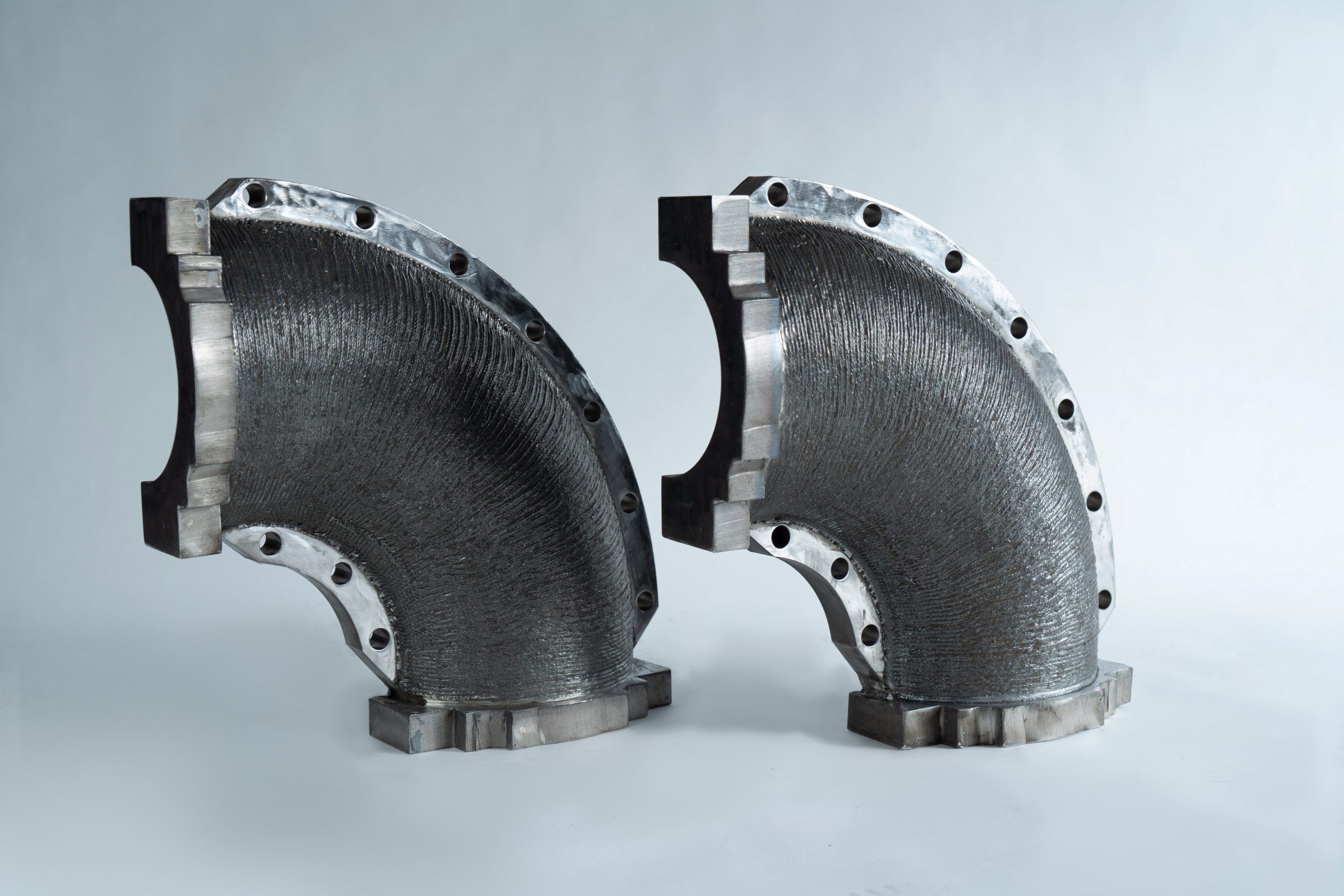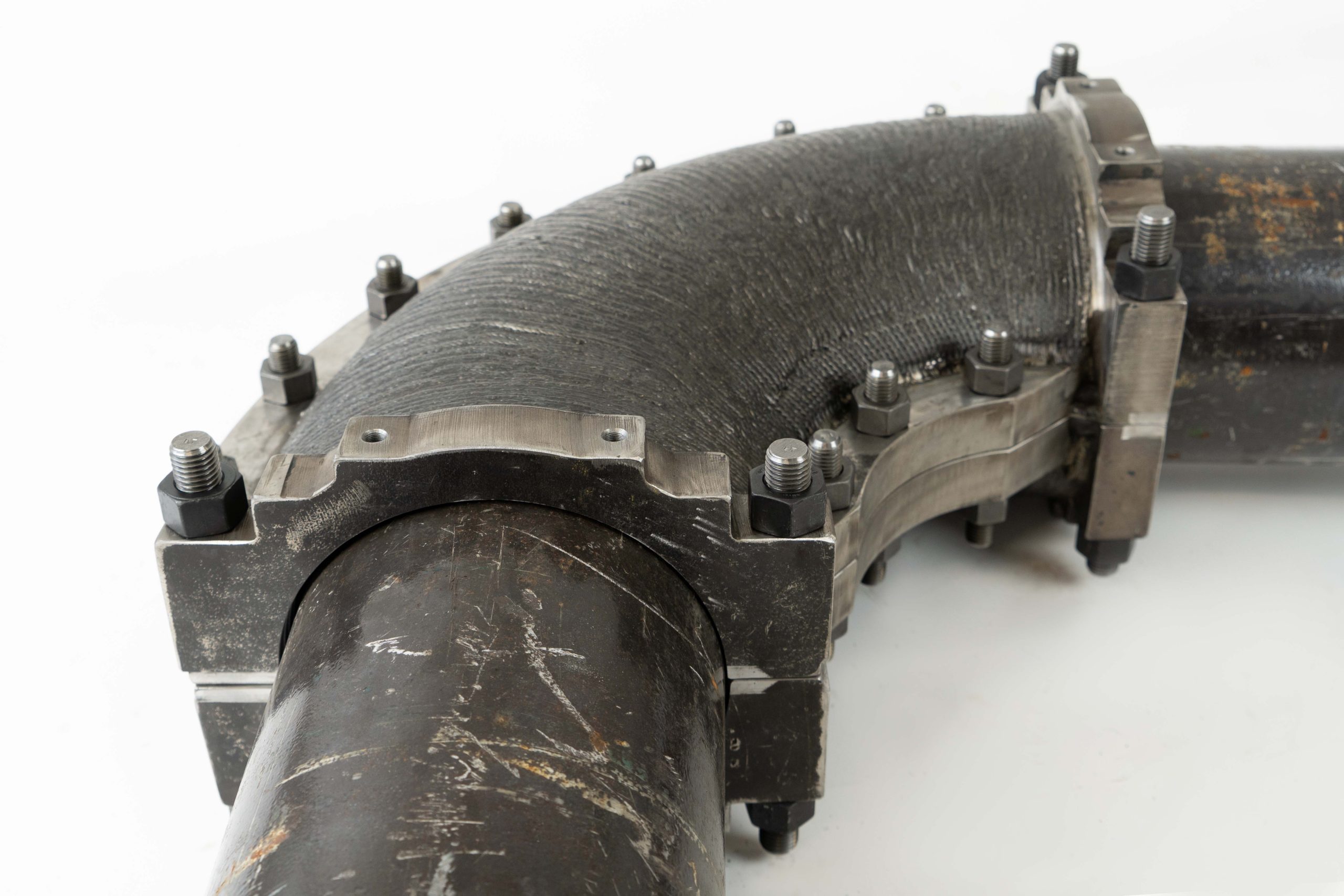MX3D, a developer of metal Wire Arc Additive Manufacturing (WAAM) technology, has unveiled its new partly 3D printed ‘WAAM Clamp’.
The hybrid industrial part is an example of a pipeline clamp, a component used to seal high-pressure leaks in the chemical and oil and gas sectors. Pipeline clamps are a crucial part of pipeline repair, and also serve to improve the service life of an installation before maintenance is required.
Supported by the EU Horizon 2020 program, the 3D printed WAAM Clamp was manufactured and tested with help from Team Industrial Services and TiaT – two specialists in industrial pipe system maintenance. The BWI (Belgian Welding Institute) also performed material testing, while Lloyd’s Register aided MX3D with the part certification process.
Thomas Van Glabeke, Project Lead and R&D Manager at MX3D, said, “Hybrid additive manufacturing combines both the advantages of conventional manufacturing such as precision and high production speed of ‘simple’ parts, with the advantages of additive manufacturing, such as geometrical freedom, production speed, and minimal material waste. The WAAM Clamp quality and complexity showcase the potential of the technology developed by MX3D.”
Up to €1 million a day
In the oil and gas sector, short lead times are crucial due to their implications for production downtime and minimizing human, environmental, and safety risks. As it stands, the lead time of a pipeline repair project can be as long as three weeks, with a potential value loss of up to €1M a day for the affected company.
The pipeline clamps used in modern-day repair projects often rely on conventional manufacturing processes such as CNC machining, which unfortunately also come with high material waste (sometimes over 80% of the original material block). Operating these machines also tends to require a specialized workforce, which is a dwindling resource in the age of digitization.

Bridging traditional and additive manufacturing
In a bid to address these issues, the hybrid WAAM Clamp combines both conventional and additive manufacturing. The component was partly fabricated using an MX3D M1 Metal AM 3D printer, with some of the simpler sections CNC machined for precision.
Weighing in at 87kg (30kg of which was 3D printed), the WAAM Clamp took 45 hours to manufacture with a material deposition rate of 2.1 kg/hr. The project partners opted for ASME IIA SA-516-70 as the base material – a type of steel commonly used for petrochemical applications. With BWI performing materials testing, Lloyd’s Register qualifying the process, and TiaT overseeing non-destructive testing for the part, the consortium was able to reach a high level of assurance for the WAAM Clamp.
Finally, Team Industrial Services validated the build with a pressure test, confirming that the WAAM Clamp was able to withstand the maximum test pressure of 60 Bar without fatigue or fracture.
By adopting a hybrid WAAM approach, the partners leveraged the dimensional precision of CNC machining with the geometric freedom of 3D printing, all while eliminating post-processing and drastically reducing lead times due to WAAM’s high deposition rate. As a bonus, material waste was also kept to a minimum, which is beneficial for both manufacturing costs and the environment.
Fleur Maas, Managing Director of the BWI, concludes, “WAAM produced components can offer a real advantage for the production of bespoke elements, for example in piping or for petrochemical industries. The alternative production methods of these (sizeable) components tend to be relatively costly, and not always able to deliver parts quickly.”

This certainly isn’t the first time additive manufacturing has been leveraged for petrochemical applications. Earlier this year, oil and gas firm Vallourec broke new ground in offshore equipment manufacturing by designing and 3D printing a safety-critical water bushing component for the very first time. Designed for French oil major Total, the part is reportedly the first ever pressure-containing component to be 3D printed using the WAAM process.
Elsewhere, a manufacturing consortium comprising ABS, Sembcorp Marine, and 3D Metalforge recently fitted a ConocoPhillips polar oil tanker with end-use 3D printed parts. The printed parts included a functional centrifugal pump shaft, a combined brine/air injector nozzle, and an effluent pump coupling device, each of which passed stringent safety checks.
Subscribe to the 3D Printing Industry newsletter for the latest news in additive manufacturing. You can also stay connected by following us on Twitter, liking us on Facebook, and tuning into the 3D Printing Industry YouTube Channel.
Looking for a career in additive manufacturing? Visit 3D Printing Jobs for a selection of roles in the industry.
Featured image shows the WAAM Clamp being 3D printed on the MX3D M1 Metal AM System. Photo via MX3D.




